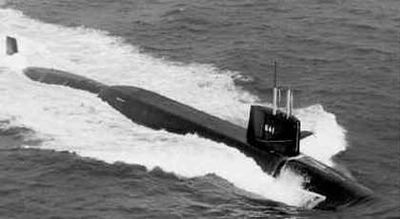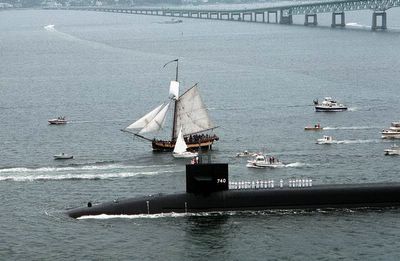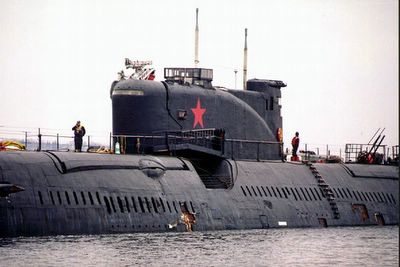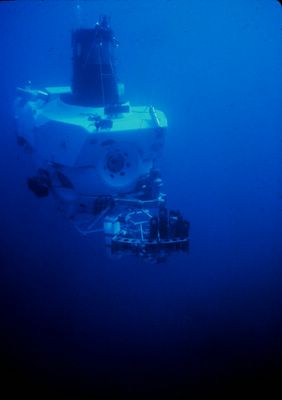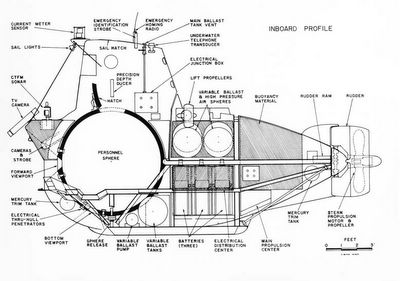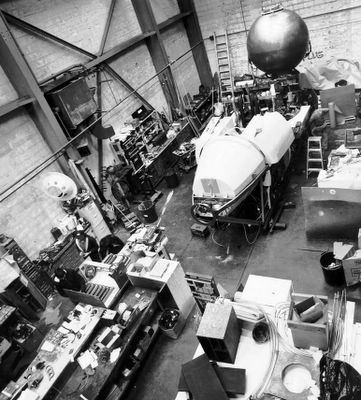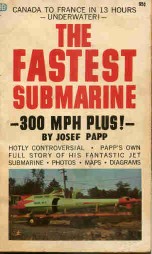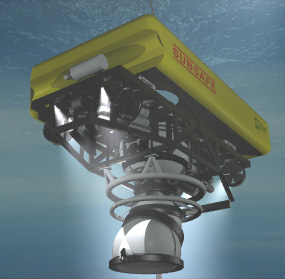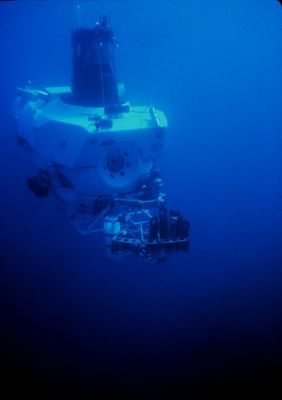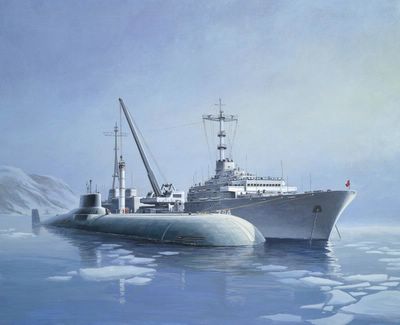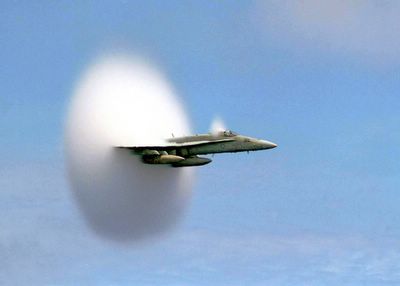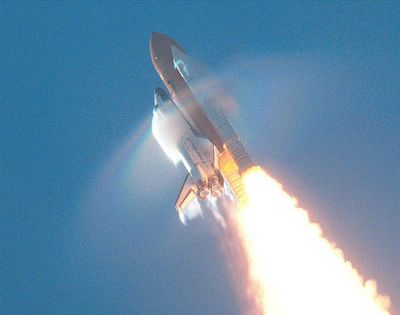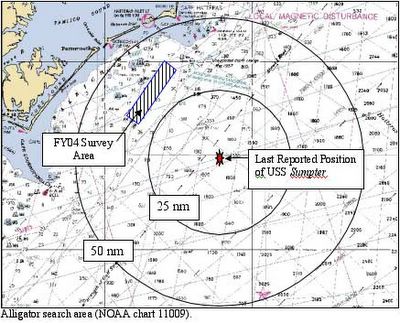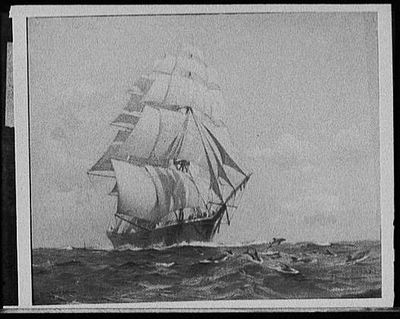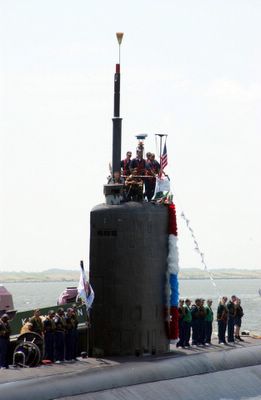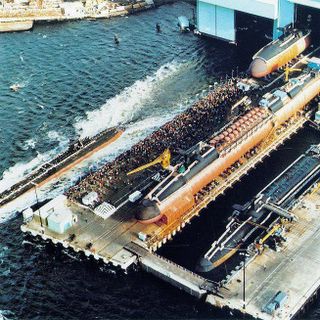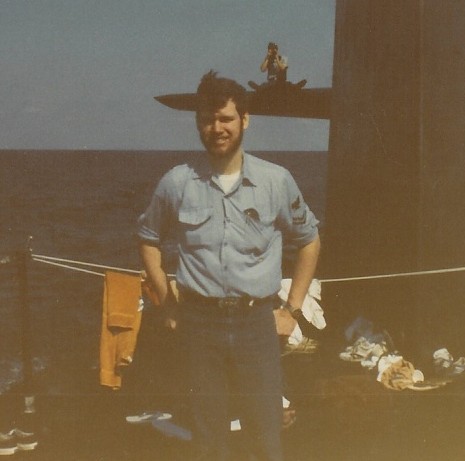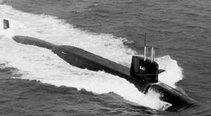In the October issue of Proceedings magazine author Norman Polmar writes in his article "Strategic Submarine Progress" (not currently available on-line) about some unconventional thinking relating to Submarine Launched Ballistic Missiles or SLBMs.

Trident II D5 Missile (Source: US Navy)
The unconventional thinking is put forth by the Defense Science Board and it is to arm some SLBMs with conventional (non-nuclear) warheads. The proposal pertains to the converted Trident SSGNs and recommends retaining some SLBM capacity. Rear Admiral Charles B. Young, Director of Strategic Systems Programs was quoted in Aerospace Daily & Defense Report, 17 June 2005 as saying a SLBM could deliver 1,250 pounds of conventional explosive to a range of 1,500 nautical miles, adding "Time of flight would be about 14 to 15 minutes... So if you have a time-critical target, that is a great capability".
The idea is that a conventional warhead's accuracy could also be enhanced to less than 30 feet with the addition of a global positioning system GPS guidance package. There is also some speculation in Polmar's Proceeding article that if the Navy were to pursue a conventional-warhead Trident missile they may consider arming Trident SSBNs in addition to or instead of SSGNs.
Although I don't think such a proposal would be very cost effective, placing a 1000 lb bomb on a extremely expensive weapons system, it does have its merits. (Addition reading on merits at the Baker Institute in pdf)
First being the ability to place a conventional weapon on a time-critical target from an extreme range. This would give the defense department a quick reaction option to an unanticipated region or situation where other assets could be hours if not days away. The caveat here being that if the target is unanticipated how do you quickly and accurately communicate the targeting information to the submarine submerged and maybe 1500 nautical miles away.
A second benefit could be the shock and awe factor. A dictator or terrorist may feel the remoteness of his location or no clear nearby US military presents as a form of safety until his chemical weapons pilot-plant is destroyed by a warhead falling at something close to Mach in double digits. The kinetic energy release alone could scare the hell out someone standing within visual range. Additionally placing the idea in the head of a dictator that the next warhead could be in the kiloton range may be enough to instill a little behavior modification to the positive.
Third, the capability to deliver a conventional weapon from a great distance with extreme accuracy and within minutes could force hostile nations to either harden or decentralize their high value military assets. The tactic of hardening, hiding or building decentralized redundancy would be costly to a potential enemy and may result in reduced command and control of those assets. The only other option for them would be to build or buy an Anti Ballistic Missile (ABM) system. This could also draw funds and skilled personnel away from the offensive weapons systems that we are more concerned about.
Lastly, the conventional SLBM warhead could be a way of prototyping and testing technology and designs to be later adapted for nuclear warheads. Such technologies could include the aforementioned improved accuracy with GPS as well as bunker busting earth penetrating munitions.
Apart from the cost, numbers of conventionally armed SLBMs would be limited because it would compete with the traditional SSBN role. A SLBM with a conventional warhead would also not be an option where an adversary is a known nuclear power with ICBM and or SLBM capability. A conventional strike could be mistaken for a nuclear one and invoke a nuclear response. Additionally such a weapon would complicate any future arms limitation talks with said powers.
The Navy has rejected this idea in the past but with the advent of the Trident conversions to SSGNs the concept may be given another look.
Video link for Missile one away, Missile two away (mpg 4.1mg).....
